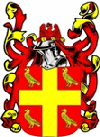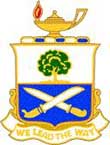herwin
Posts: 6059
Joined: 5/28/2004
From: Sunderland, UK
Status: offline

|
This thread had grown legs...
This commentary is based on work I did 25 years ago when I was chief engineer for a major corps-level combined arms C3I system. I'm working from memory without any of my manuals or documentation, so please forgive me. I do have the Command at Sea manuals, but they don't discuss doctrine and what landing operations are really like.
An assault landing was meticulously planned and scheduled, much more carefully than a land set-piece attack. Neither is well-modelled by the game engine. Let's start with a land set-piece attack. Simplifying, it consisted of a detailed fire (and air support) plan, including a preliminary bombardment to cover the movement of troops into the front line, scheduled and on-call barrages of various sorts to keep the defenders suppressed, scheduled and on-call destruction fire to take out positions. Eventually the infantry-tank teams would either directly assault the defended positions or use fire and movement to do the same thing. If this was successful, positions in the front line would be captured. This was called the 'break-in'. Then there was period of attack and counterattack as the defence attempted to seal off or recapture those positions. This was termed the 'dog-fight'. Eventually in a successful attack, the back side of the defensive line would be reached, and mobile forces would be released. This was called the 'break-out'. Success reflected whether the attacking force could keep the defence continuously suppressed, as the defence usually had sufficient firepower to stop any attack dead if unsuppressed.
Suppression meant that the attackers were winning the firepower duel--the defence would take higher percentage casualties than the attack over the operation until the breakout. This usually involved weapon system/weapon system engagements, and tactical details mattered. An infantry platoon was designed to defeat an infantry section, and so on, which is why there was combined arms down to the company and sometimes the platoon. Tanks worked with infantry in an assault, with the infantry providing target acquisition and flank protection, and the tanks providing suppressive firepower. The number of infantry needed per tank depended on the closeness of the terrain. Tanks were best off in flat, clear terrain, where they could get by with a fire team in support. They were in serious trouble in close three-dimensional terrain. Artillery did most of the killing, but most of their fire was suppressive. Artillery suppression usually involved guns of larger calibre (with heavier explosive charges and longer ranges) suppressing guns (and mortars) of smaller calibre rather than an advantage in numbers at a specific calibre.
Air strikes had an interesting role. Basically, troops take cover when under artillery fire, and scatter away from the bomb aim points when attacked by aircraft. It takes a lot longer for a unit to recover from an air strike than from artillery bombardment of the same intensity, and troops who have taken cover or scattered are not contributing their firepower to the defence during that period.
A corps set-piece attack on a dug-in but unfortified division was a slow (about a kilometre a day) but eventually successful process. If the division was fortified, a reinforced corps (3 divisions, tank brigade, artillery brigade, engineers) was needed. In terms of firepower, fortification doubled the defence, and reinforcement doubled the attack. A beach assault was a set-piece frontal attack against a fortified position, so it required a reinforced and specially-trained force. Naval gunfire was about 1/4 as effective as gunfire by surveyed-in artillery on land, so you needed a whole lot more tubes for the same effect. The attacking troops had nowhere to hide--they couldn't take cover and pull out at night--so even greater superiority was required.
The first stage in a beach assault was force recon. Then the amphib TF would close the shore, giving up its mobility and operating in restricted waters. If there were shore defences, naval gunfire had to suppress them, although, most shore defences remained under cover until the landing was taking place. Minecraft cleared the Amphibious Operating Area (AOA), which extended seaward 10-15 nm from the beach and was screened by surface forces. Shipping in the AOA was limited to 10-15 knots. The boat lanes extended out from the beach about 4-5 nm, while the transports remained 10-15 nm from the shore. In between was the approach lane. Fire support areas flanked this area. The goal of the landing was to break into the beach defences--in the same sense as above. If there were heavy coast defence artillery (155mm+), it forced the transports to stand off at about 15 nm, and slowed operations markedly. From transport to the beach was 2-3 hours, which was about all the troops could stand.
It didn't take much resistance to make a beach assault bloody. Very few landings were attempted in the vicinity of an operational coastal defence battery. The Japanese assault on Corregidor took 60% losses before it even reached the beach.
To model this, you need to determine which side has firepower superiority over the battlefield that day. If the attackers, they gain ground (about 8 square kilometres for a corps attack on a division frontage). If the defenders, the attack is stopped dead. Note that the defence has to counterattack to regain ground lost. Casualties can be estimated from the tempo of operations, historical data, accurate operational games (I like the OCS series), and the various planning manuals. Generally speaking, neither ground gained nor casualties were particularly sensitive to the degree of overmatch. To double defensive casualties from those in a corps attack (where the firepower superiority was just acceptable) you needed to attack a division with an army or more. That was a waste of assets--you were better off using an armoured corps, which advanced about twice as fast against a defending infantry division. Mobile ops were a whole different ball game, too.
< Message edited by herwin -- 1/9/2010 8:16:04 AM >
_____________________________
Harry Erwin "For a number to make sense in the game, someone has to calibrate it and program code. There are too many significant numbers that behave non-linearly to expect that. It's just a game. Enjoy it." herwin@btinternet.com |
 Printable Version
Printable Version













 ). If PB's get close enough, and take CD's under fire, then the CD's very well might shoot at the PB's to stop the attack. Gun crews can certainly be killed by rounds from PB guns that hit home, no matter how big the breech they're loading.
). If PB's get close enough, and take CD's under fire, then the CD's very well might shoot at the PB's to stop the attack. Gun crews can certainly be killed by rounds from PB guns that hit home, no matter how big the breech they're loading. 


 New Messages
New Messages No New Messages
No New Messages Hot Topic w/ New Messages
Hot Topic w/ New Messages Hot Topic w/o New Messages
Hot Topic w/o New Messages Locked w/ New Messages
Locked w/ New Messages Locked w/o New Messages
Locked w/o New Messages Post New Thread
Post New Thread